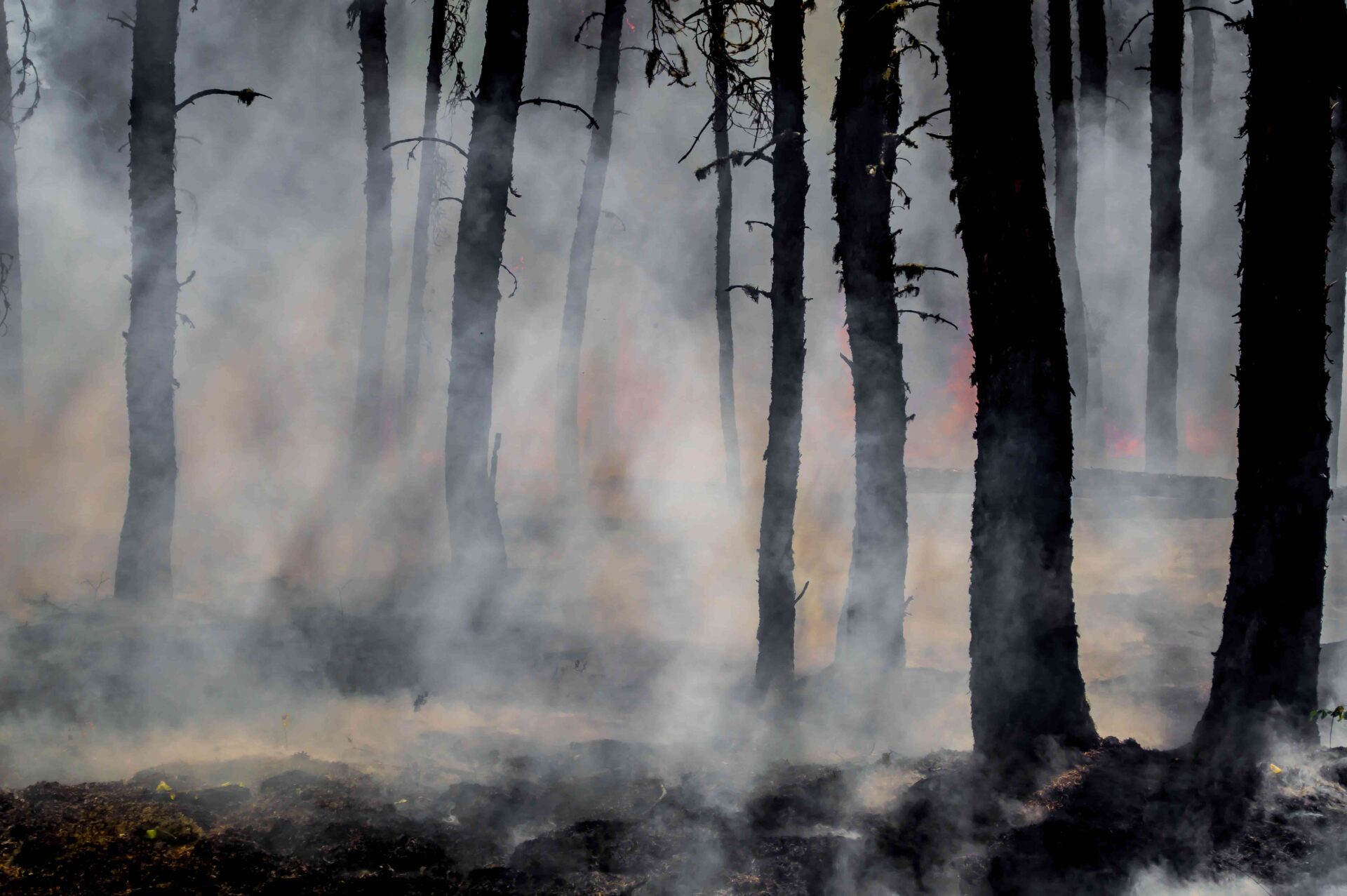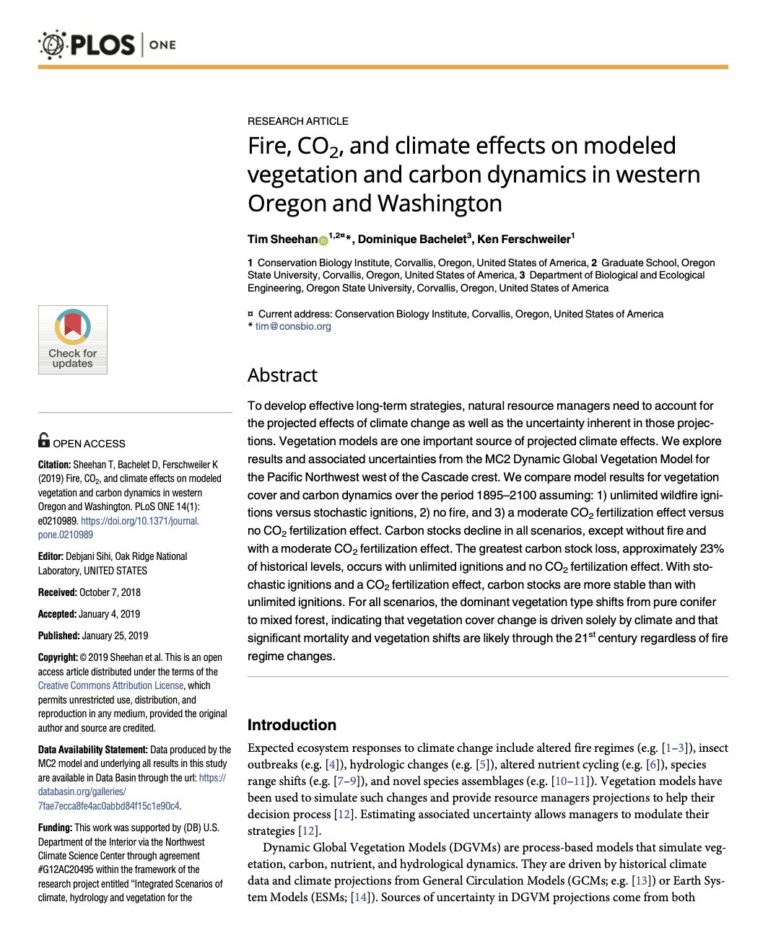To develop effective long-term strategies, natural resource managers need to account for the projected effects of climate change as well as the uncertainty inherent in those projec- tions. Vegetation models are one important source of projected climate effects. We explore results and associated uncertainties from the MC2 Dynamic Global Vegetation Model for the Pacific Northwest west of the Cascade crest. We compare model results for vegetation cover and carbon dynamics over the period 1895–2100 assuming: 1) unlimited wildfire igni- tions versus stochastic ignitions, 2) no fire, and 3) a moderate CO2 fertilization effect versus no CO2 fertilization effect. Carbon stocks decline in all scenarios, except without fire and with a moderate CO2 fertilization effect. The greatest carbon stock loss, approximately 23% of historical levels, occurs with unlimited ignitions and no CO2 fertilization effect. With sto- chastic ignitions and a CO2 fertilization effect, carbon stocks are more stable than with unlimited ignitions. For all scenarios, the dominant vegetation type shifts from pure conifer to mixed forest, indicating that vegetation cover change is driven solely by climate and that significant mortality and vegetation shifts are likely through the 21st century regardless of fire regime changes.
Fire, CO2, and climate effects on modeled vegetation and carbon dynamics in western Oregon and Washington



